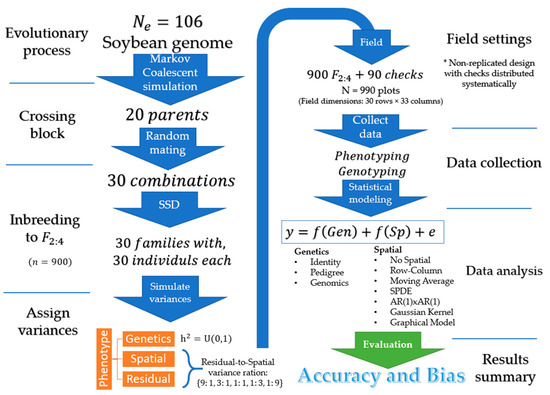
Thus, dealing with many traits simultaneously is an essential task of cultivar development, although most breeding-related publications deal with only a single trait, typically yield. Likewise, quality is a collective term of many parameters for a specific end-use. Consequently, yield in different regions may mean different ways of packaging these traits and underlying gene alleles. Yield is the result from integrating numerous traits including various yield components, agronomic traits, disease resistances, and tolerance to various abiotic stresses characteristic of the target region.


Both the target environments and the target end-uses may change over time, in a predictable or unpredictable manner. Improved quality means improved adaptation to the end-uses that bring value and income to the growers in the target region. Improved yield means improved adaptation to the target region, which is reflected in improved mean performance and stability of performance across locations and years in the target region.
#Airima on asreml plus#
A target region is the target population of environments, which is the sum of soil, climatic, biotic, and abiotic conditions plus common management practices that are likely to be encountered in the region. All theories, concepts, processes, procedures, and analyses related to plant breeding are developed and implemented around this goal. The goal of a plant breeding program is to develop new cultivars of a crop kind with improved yield and quality for its target region and end-use. Plant breeding plays a key role in meeting the human needs for more food, nutrition, and fiber under a changing climate.

Efforts were made to organize and comment on these concepts and procedures in a systematic manner. Genomic selection may provide an alternative and potentially more effective approach in all these aspects. Selection on multiple traits includes independent culling and index selection, for the latter GYT (genotype by yield *trait) biplot analysis was recommended. Related concepts and procedures were critically reviewed, including GGE (genotypic main effect plus genotype by environment interaction) biplot analysis, GGE + GGL (genotypic main effect plus genotype by location interaction) biplot analysis, LG (location-grouping) biplot analysis, stability analysis, spatial analysis, adequate testing, and optimum replication. Approaches to improve H include identifying and utilizing repeatable genotype by environment interaction (GE) through mega-environment analysis, accommodating unrepeatable GE through adequate testing, and reducing experimental error via replication and spatial analysis. Population development is to maximize μσ G and progeny selection is to improve H. A complete breeder's equation was presented to cover both stages, which consists of three key parameters for a trait of interest: the population mean (μ), the population variability (σ G), and the achieved heritability ( h 2 or H), under the multi-location, multi-year framework. Cultivar development consists of two stages: the development of a promising breeding population and the selection of the best genotypes out of it.

Both yield and quality must be considered simultaneously, which constitutes the greatest challenge to successful cultivar development. Improved or maintained quality renders and adds value to the improved yield. Improved yield across locations and years means better adaptation to the climatic, soil, and management conditions in the target region. The goal of a plant breeding program is to develop new cultivars of a crop kind with improved yield and quality for a target region and end-use.


 0 kommentar(er)
0 kommentar(er)
